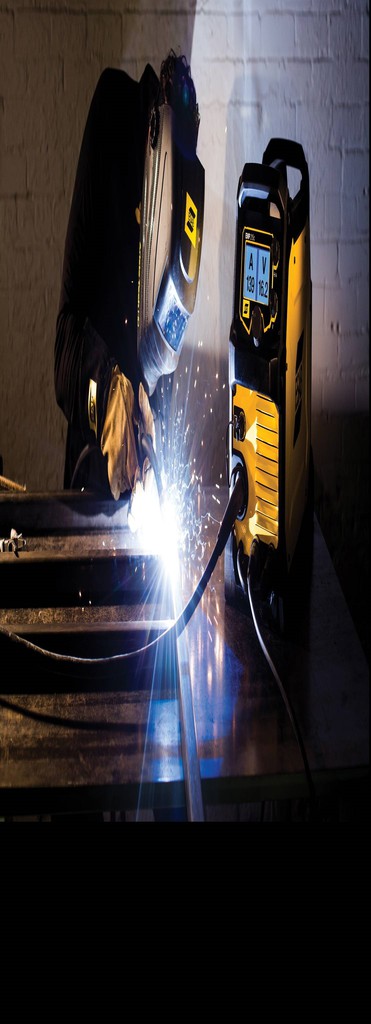

|
Edward Lowton
Editor |


|
| Home> | Production Engineering | >Welding | >Welding matters |
Welding matters
23 May 2017
Some years ago, ESAB developed QSET to make MIG welding set-ups easier and to maintain a stable arc under a variety of welding conditions. Now smartMIG technology is making set-ups even easier and achieving a level of arc stability that surpasses that offered by QSET.

Currently the sMIG technology is incorporated in Rebel welding machines that can be used on mild steel, stainless steel, chrome-moly or aluminium plate from 1.0 to 12.7mm thick, with wire diameters from 0.6 to 1.0mm, delivering 5 to 205A for MIG welding at a 25% duty cycle while operating from a 230V single-phase supply (when using a 120V supply the maximum current is 130A at a 25% duty cycle); sMIG also supports MIG brazing. ESAB will be applying sMIG technology to more short-arc welding machines in the future.
To use sMIG, the operative simply enters the plate thickness and wire diameter via the 4.3-inch colour TFT display; there is no need to input the shielding gas. The final step in setting up the welding process is the production of a short test weld. After that, ESAB says even an inexperienced welder can produce consistent, high-quality welds, and experienced operatives can more easily find the weld’s ‘sweet spot’ and produce welds without having to concentrate as much as they would normally - which means they can remain highly productive for longer.
Commercial sensitivity dictates that full details of the sophisticated sMIG control algorithms cannot be published, but it can be stated that the sMIG technology monitors the welding current and voltage and continuously makes small adjustments to the weld parameters to account for variability in the operative’s technique, such as torch angle and stick-out length. Experienced operatives who have welded with the sMIG technology say they can hear the arc’s superior stability and see the results on the finished weld, which is characterised by an excellent weld bead appearance and minimal spatter.
If they prefer to, experienced operatives can use the ‘advanced’ mode offered by intuitive and easy to use TFT panel, which enables them to fine-tune the heat input by means of the voltage trim control, thereby altering the bead profile. Inductance can also be altered to further improve arc stability and minimise spatter. When in ‘advanced’ mode, the sMIG technology continues to measure welding parameters and make small adjustments to maintain the stable arc, with the operative’s fine-tuning having the effect of moving the ‘set point’ at which sMIG maintains the stable arc.
When developing the smartMIG technology, ESAB’s engineers wanted to make it as easy as possible for inexperienced operatives to produce high-quality welds, which meant simplifying the set-up and automatically maintaining a stable arc during the welding. In addition, the engineers recognised that inexperienced operatives, over time, become experienced and the same welding equipment is inevitably used by both inexperienced and skilled operatives. The result is that sMIG requires only the absolute minimum of parameters to be entered during set-up (just plate thickness and wire diameter) and experienced users have the option to enter ‘advanced’ mode to fine-tune the weld – yet this still retains all of the advantages of sMIG in terms of ease of set-up and automatic arc stabilisation.
- Cutting welding time and cost
- Plasma bevelling system boosts productivity, reliability and safety
- Handbook as CD
- Bridge role for welding firm
- New guide book for welders
- Automatic welding helmet
- Welding system for jet hydroplane project
- Advanced functions
- Enjoy the extra large welding v
- ESAB launches new B2 filler metals line

















